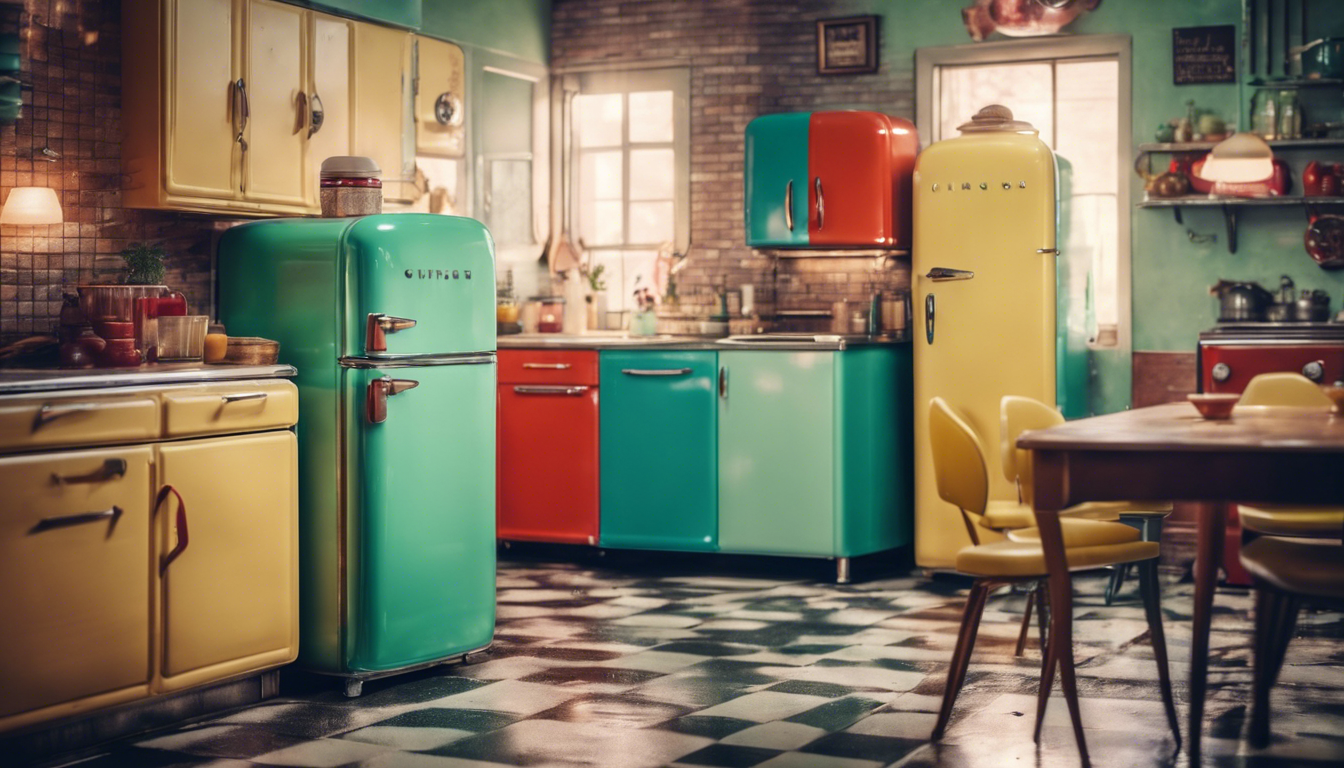There’s nothing quite like a vintage refrigerator to add a touch of retro flair to a modern kitchen. These appliances, often celebrated for their chic designs and robust constructions, hark back to a time when attention to detail was paramount in manufacturing. But is a vintage refrigerator just a pretty face, or does it provide functionality that competes with today’s models? This article seeks to delve into the world of vintage refrigerators, assessing their features, reliability, and economic considerations.
Vintage refrigerators, which typically refer to models from the 1920s to the late 1970s, are not only conversation starters but also pieces of functional art. Brands like Frigidaire, General Electric, and Westinghouse were among the frontrunners in creating appliances that have since become coveted collector’s items. The appeal of these refrigerators comes from their distinct, often colorful, enamel exteriors and uniquely shaped handles.
From a technical standpoint, vintage refrigerators often feature less sophisticated cooling technologies than modern ones. Many utilize absorption systems, which are quieter than the compressor technology found in today’s units but are less energy efficient. Moreover, the insulation in older models is usually inferior, leading to higher running costs. However, the build quality of many vintage models is exceptional, with heavy-duty materials and components designed to last.
One of the major attractions of vintage refrigerators is their aesthetic contribution to kitchen spaces. Homeowners and interior designers often use these appliances as the centerpiece in retro kitchen designs. Models like the GE Monitor Top, introduced in the 1930s, are particularly popular due to their unique top-mounted compressor, which gives the unit a distinctive silhouette that modern fridges simply can’t match.
Despite their charm, vintage refrigerators do have drawbacks. The most notable is efficiency. Many older models are significantly more power-hungry compared to modern energy-star rated appliances. This can lead to increased energy bills and a larger carbon footprint, something prospective buyers should consider.
Maintenance can also pose challenges. Finding replacement parts or experts capable of repairing these older machines can be difficult and costly. Many vintage appliance enthusiasts often turn to specialized forums and communities for support and to source parts.
Cost-wise, the price of a fully restored vintage refrigerator can vary significantly. Smaller, less ornate models from less sought-after eras might be found for as little as $300 or $400, while iconic models from popular periods like the 1950s can fetch thousands, especially if they have been professionally restored.
Many companies specializing in vintage appliances offer limited warranties that mostly cover labor and parts for a few months post-purchase. Longer warranty options, if available, typically come at an additional cost, reflecting the risk and maintenance potential associated with these older models.
For those considering a vintage refrigerator for daily use, some modern manufacturers like Smeg and Northstar offer new appliances designed to look old but feature the modern workings of today’s technology. These units provide the aesthetic of vintage with the reliability and energy efficiency of modern appliances, complete with full manufacturer warranties.
While vintage refrigerators require a specific buyer who values style as much as function, their timeless designs and robust construction make them a worthwhile investment for the right individual. With careful consideration of their maintenance, efficiency, and operational costs, these pieces can provide both aesthetic charm and practical utility in any kitchen.

